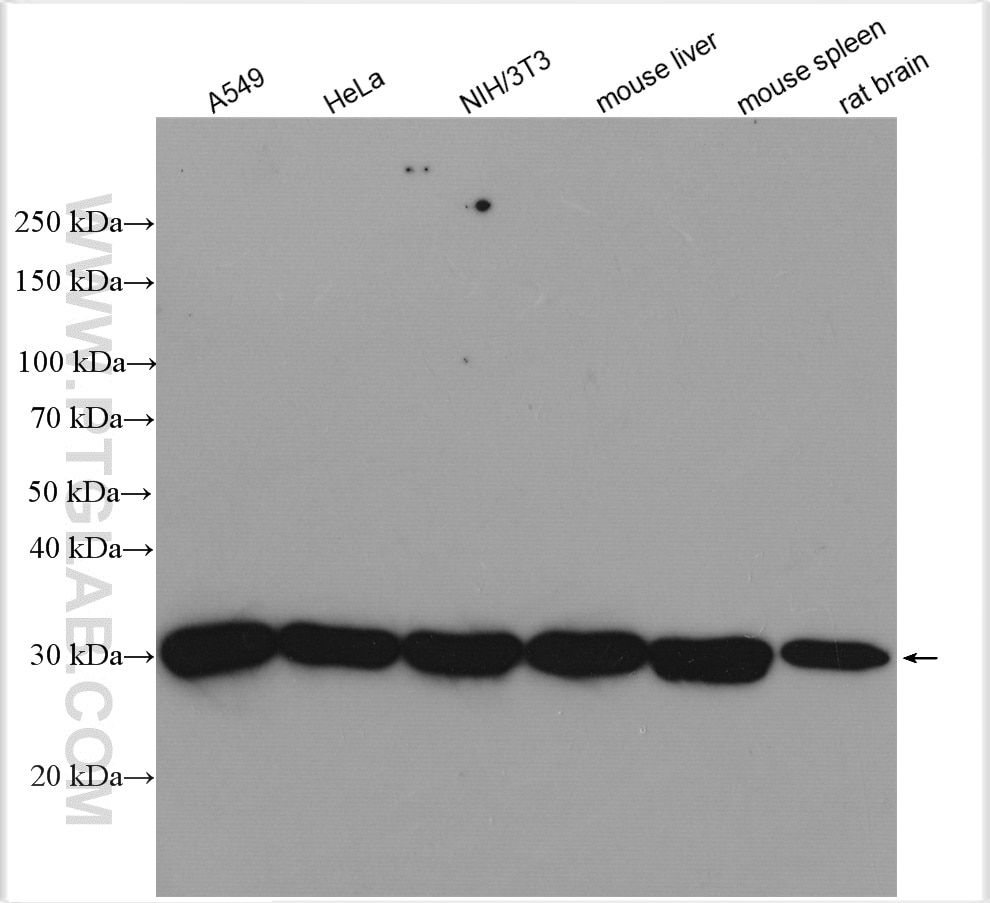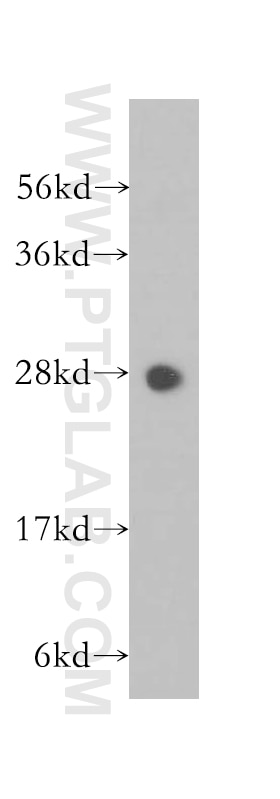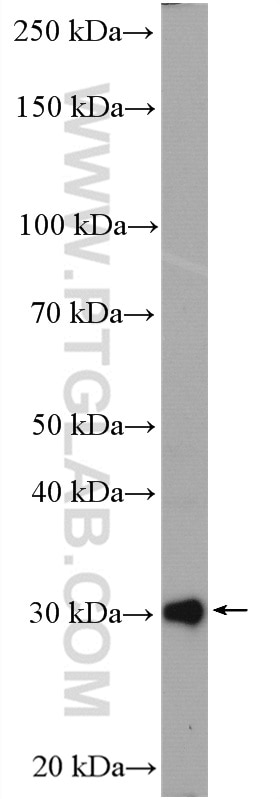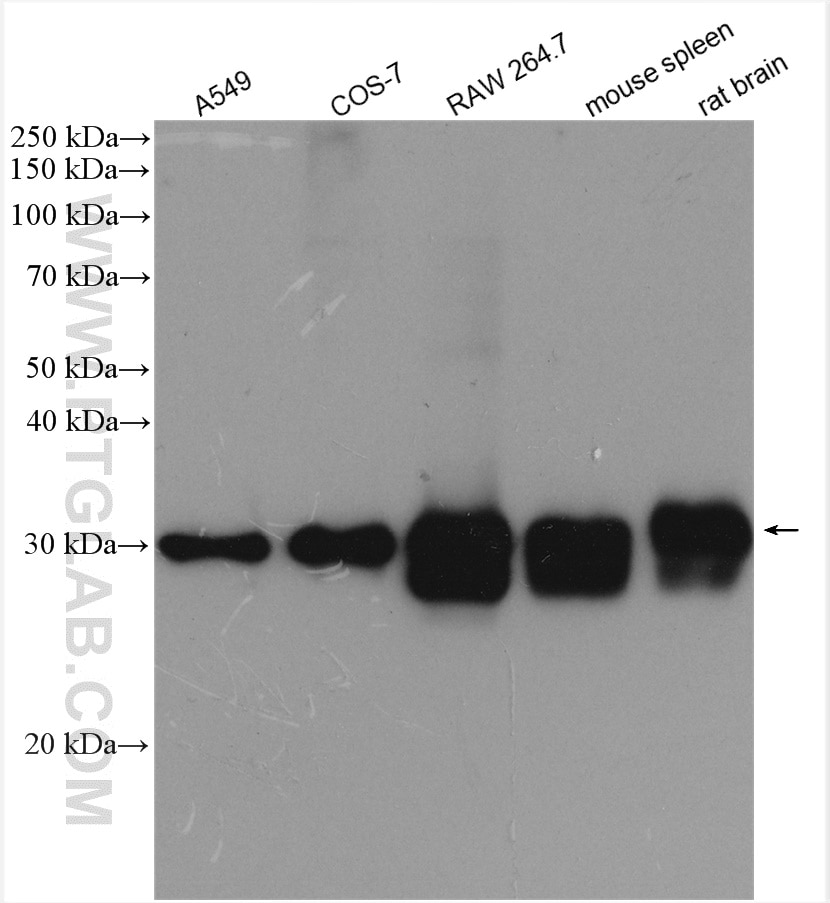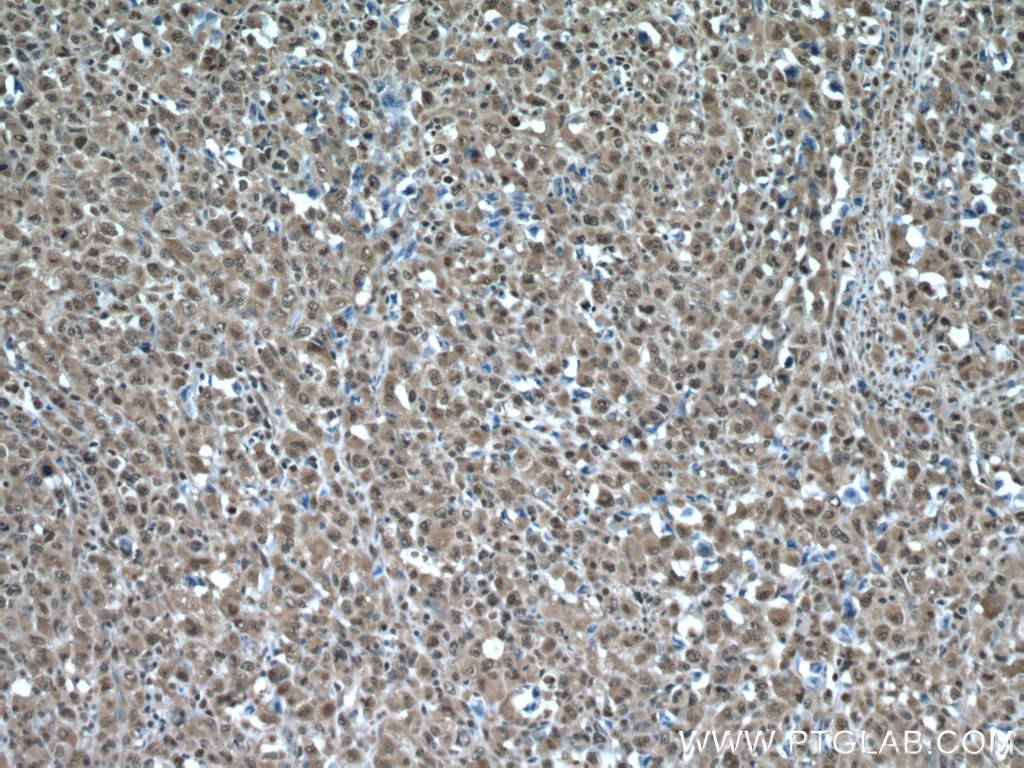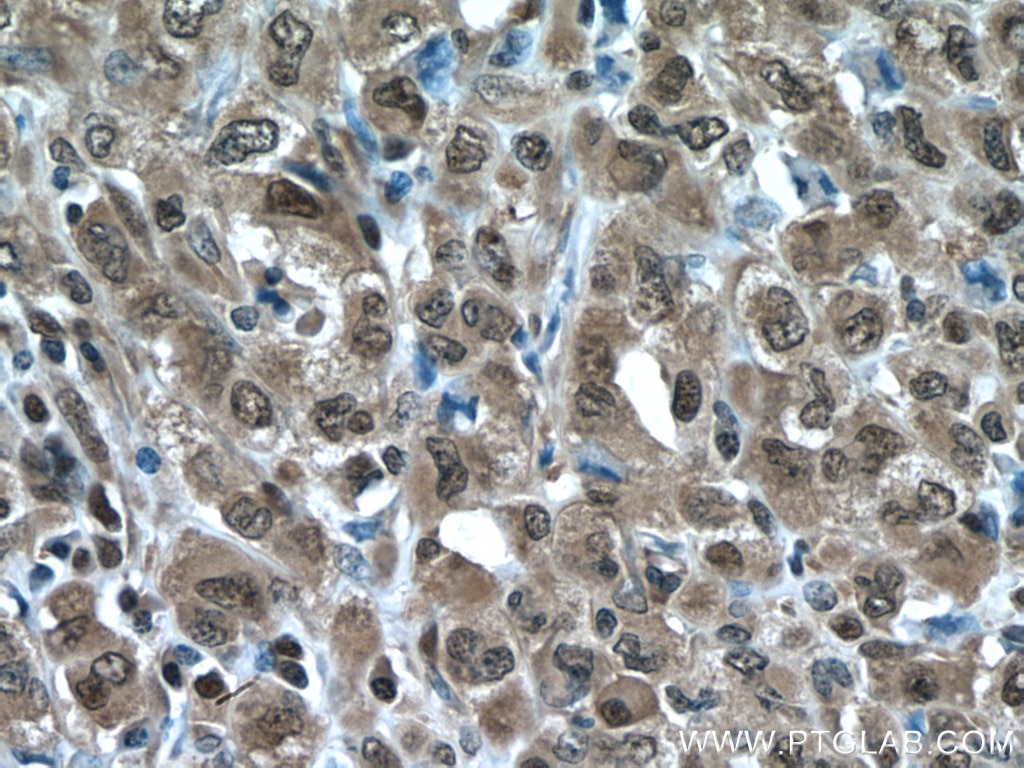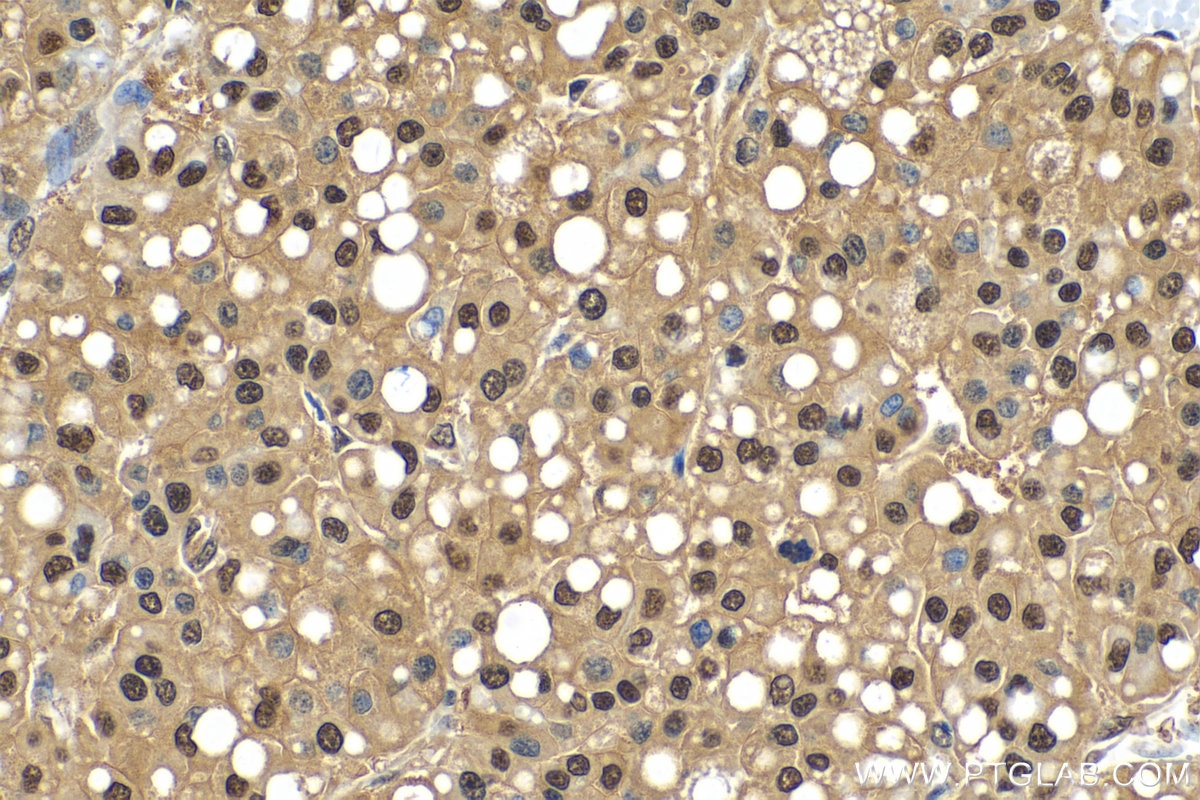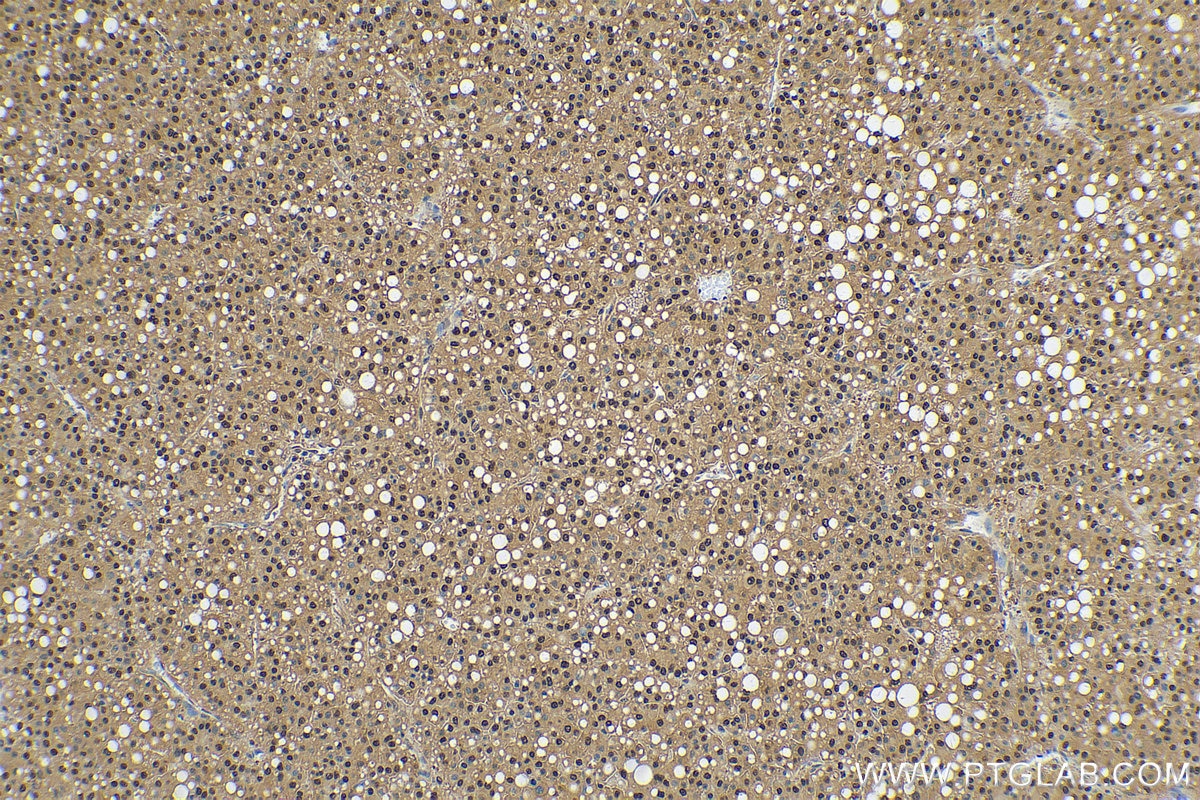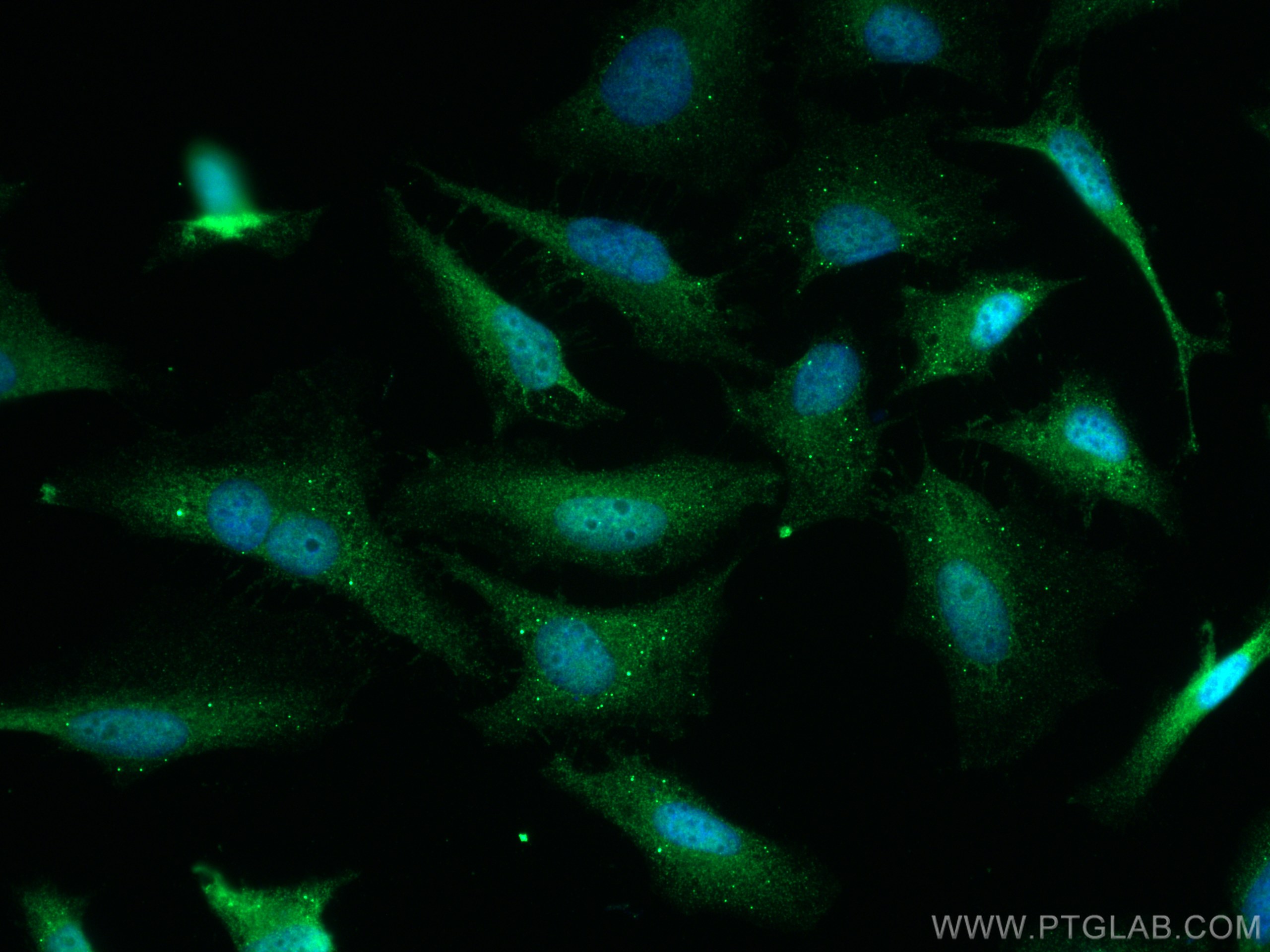Anticorps Polyclonal de lapin anti-PSMA3
PSMA3 Polyclonal Antibody for WB, IHC, IF/ICC, ELISA
Hôte / Isotype
Lapin / IgG
Réactivité testée
Humain, rat, singe, souris
Applications
WB, IHC, IF/ICC, ELISA
Conjugaison
Non conjugué
N° de cat : 11887-1-AP
Synonymes
Galerie de données de validation
Applications testées
| Résultats positifs en WB | cellules A549, cellules COS-7, cellules HeLa, cellules NIH/3T3, cellules PC-12, cellules RAW 264.7, tissu cérébral de rat, tissu hépatique de souris, tissu pulmonaire humain, tissu splénique de souris |
| Résultats positifs en IHC | tissu de lymphome humain, tissu cérébral de souris, tissu de cancer du foie humain il est suggéré de démasquer l'antigène avec un tampon de TE buffer pH 9.0; (*) À défaut, 'le démasquage de l'antigène peut être 'effectué avec un tampon citrate pH 6,0. |
| Résultats positifs en IF/ICC | cellules HeLa, |
Dilution recommandée
| Application | Dilution |
|---|---|
| Western Blot (WB) | WB : 1:1000-1:8000 |
| Immunohistochimie (IHC) | IHC : 1:200-1:500 |
| Immunofluorescence (IF)/ICC | IF/ICC : 1:200-1:800 |
| It is recommended that this reagent should be titrated in each testing system to obtain optimal results. | |
| Sample-dependent, check data in validation data gallery | |
Applications publiées
| WB | See 4 publications below |
| IF | See 1 publications below |
| ELISA | See 1 publications below |
Informations sur le produit
11887-1-AP cible PSMA3 dans les applications de WB, IHC, IF/ICC, ELISA et montre une réactivité avec des échantillons Humain, rat, singe, souris
| Réactivité | Humain, rat, singe, souris |
| Réactivité citée | Humain, souris |
| Hôte / Isotype | Lapin / IgG |
| Clonalité | Polyclonal |
| Type | Anticorps |
| Immunogène | PSMA3 Protéine recombinante Ag2495 |
| Nom complet | proteasome (prosome, macropain) subunit, alpha type, 3 |
| Masse moléculaire calculée | 255 aa, 28 kDa |
| Poids moléculaire observé | 28 kDa |
| Numéro d’acquisition GenBank | BC029402 |
| Symbole du gène | PSMA3 |
| Identification du gène (NCBI) | 5684 |
| Conjugaison | Non conjugué |
| Forme | Liquide |
| Méthode de purification | Purification par affinité contre l'antigène |
| Tampon de stockage | PBS with 0.02% sodium azide and 50% glycerol |
| Conditions de stockage | Stocker à -20°C. Stable pendant un an après l'expédition. L'aliquotage n'est pas nécessaire pour le stockage à -20oC Les 20ul contiennent 0,1% de BSA. |
Informations générales
PSMA3(Proteasome subunit alpha type-3) is also named as HC8, PSC8 and belongs to the peptidase T1A family. The proteasome is a multicatalytic protease complex that catalyzes an energy-dependent, extralysosomal proteolytic pathway responsible for selective elimination of proteins with aberrant structures and naturally occurring short-lived proteins related to metabolic regulation and cell cycle progression. It has 2 isoforms produced by alternative splicing.
Protocole
| Product Specific Protocols | |
|---|---|
| WB protocol for PSMA3 antibody 11887-1-AP | Download protocol |
| IHC protocol for PSMA3 antibody 11887-1-AP | Download protocol |
| IF protocol for PSMA3 antibody 11887-1-AP | Download protocol |
| Standard Protocols | |
|---|---|
| Click here to view our Standard Protocols |
Publications
| Species | Application | Title |
|---|---|---|
Free Radic Biol Med Identification of an unstable 4-hydroxynoneal modification on the 20S proteasome subunit α7 by recombinant antibody technology. | ||
Clin Transl Med FBXW24 controls female meiotic prophase progression by regulating SYCP3 ubiquitination. | ||
JCI Insight Endothelial extracellular vesicle miR-423-5p regulates microvascular homeostasis and renal function after ischemia-reperfusion injury | ||
Cell Mol Life Sci The insulin-degrading enzyme is an allosteric modulator of the 20S proteasome and a potential competitor of the 19S. | ||
ChemMedChem Pyrazolones Activate the Proteasome by Gating Mechanisms and Protect Neuronal Cells from β-Amyloid Toxicity. | ||
Research (Wash D C) SERBP1 Promotes Stress Granule Clearance by Regulating 26S Proteasome Activity and G3BP1 Ubiquitination and Protects Male Germ Cells from Thermostimuli Damage |
